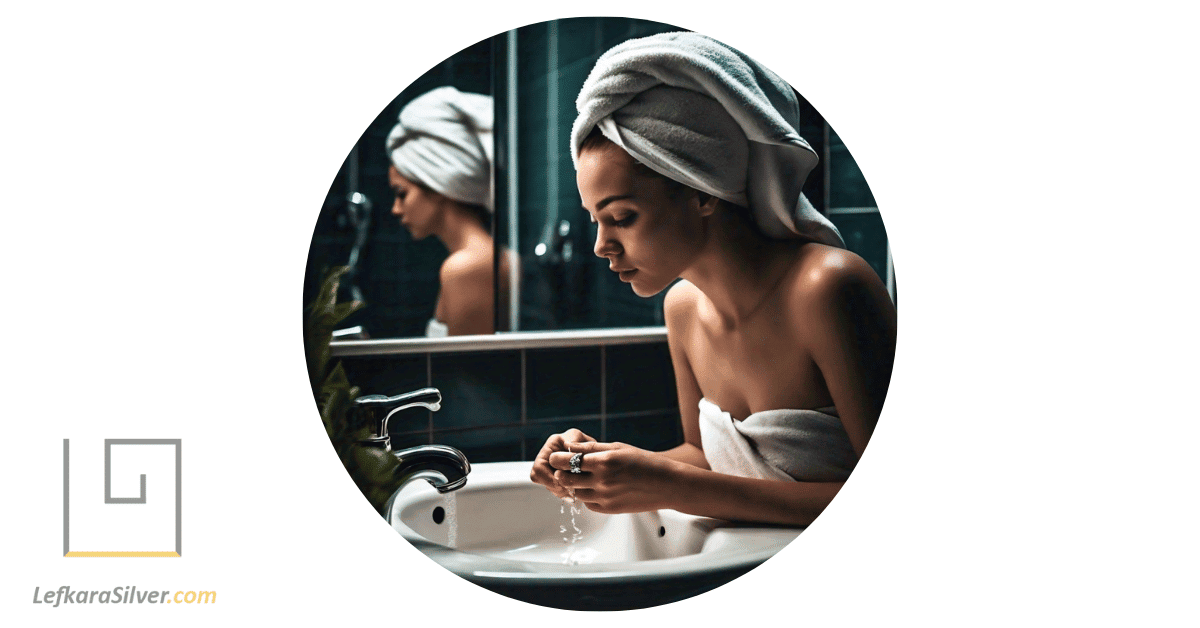
Can You Shower with Opal Jewelry? 7 Big Need-to-Know Effects: Top 2025 Update
Opal jewelry has undeniable charm. As we continue in 2025, staying informed about the dos and don’ts of caring for these precious gemstones is crucial. This comprehensive article will dive deep into opal jewelry, exploring its history, symbolism, and allure. We’ll also tackle the burning question on every opal lover’s mind: can you shower with opal jewelry? Get ready to discover the seven need-to-know effects of water on your beloved opal pieces.
But that’s not all – we’ll also explore the impact of soap on opal jewelry and provide you with essential precautions to take when showering with these delicate treasures. And for those post-shower moments, we’ll guide you through cleaning and maintaining your opal jewelry to keep it sparkling for years.
So, whether you’re a longtime opal enthusiast or a newcomer to the world of these enchanting gemstones, join us as we unravel the mysteries of opal jewelry care in September 2025. Let’s dive in!
Exploring Opal Jewelry
Opal jewelry has a rich history that dates back to ancient times. The ancient Greeks believed that opals were formed from the tears of Zeus, while the ancient Romans saw them as a symbol of hope and purity. In the Middle Ages, opals were thought to possess magical powers and were often worn as talismans to ward off evil spirits.
Opal is the birthstone for October and the traditional gift for the 14th wedding anniversaries. This gemstone is known for its unique play of color caused by the diffraction of light within the stone’s silica spheres. The most prized opals are those with a vivid play of color that spans the entire spectrum of the rainbow.
When it comes to opal jewelry, there are several varieties to choose from. Ethiopian opals, known for their brilliant play of color and affordability, have recently gained popularity. Australian opals, particularly those from Coober Pedy and Lightning Ridge, are highly sought after for their vibrant hues and patterns. Other notable types include Mexican fire opals, which showcase a fiery orange or red, and Peruvian blue opals, which display a mesmerizing blue hue.
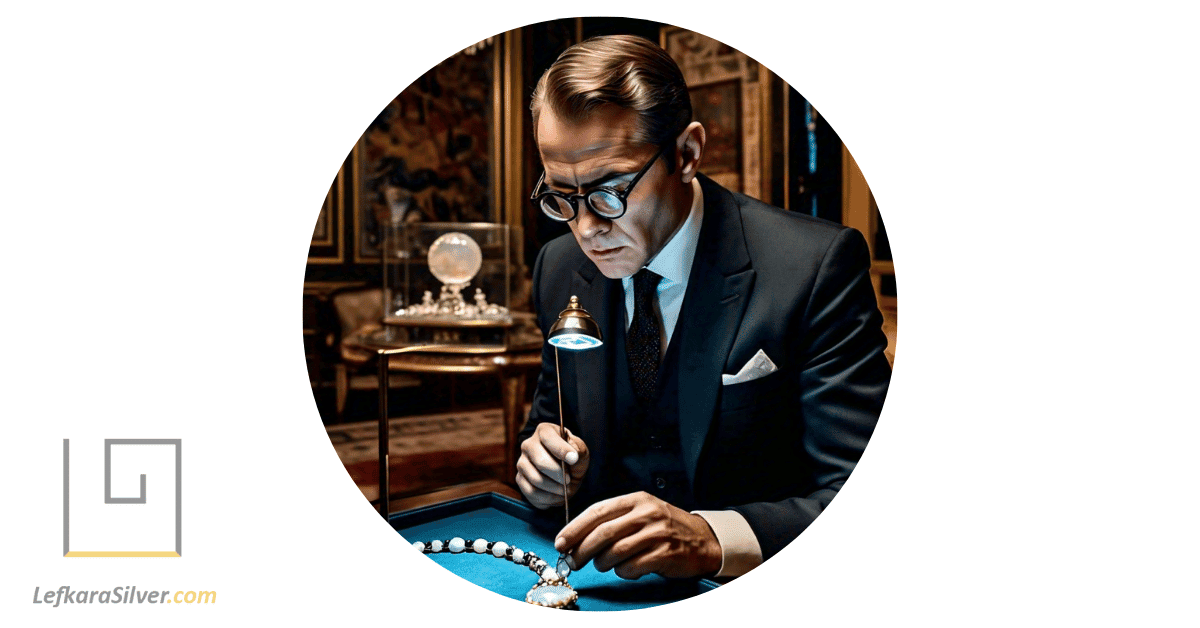
Opal Jewelry Key Statistics of September 2025
Let’s see these key statistics about opal jewelry before we continue:
- First and foremost, opals are relatively soft gemstones, ranking 5.5 to 6.5 on the Mohs scale of hardness. This means they require gentle handling and care to prevent scratches and chips.
- Opals are also sensitive to temperature changes and can crack or shatter if exposed to extreme heat or cold. It’s crucial to avoid subjecting your opal jewelry to sudden temperature shifts.
- Opals contain significant water, typically 2% to 6% of their weight. This water content is essential to maintaining the opal’s beauty and structure.
- It’s worth noting that not all opals are created equal. Some opals, particularly those from Ethiopia, are more porous and prone to absorbing liquids and oils.
The Seven Effects of Water on Opal Jewelry
1. Dullness and Loss of Shine
One of the most noticeable effects of water on opal jewelry is the loss of shine and brilliance. When opals are exposed to water for extended periods, they can absorb the liquid, causing the surface to become dull and lackluster. This is particularly true for Ethiopian opals, which are more porous than their Australian counterparts.
2. Crazing and Cracking
Another significant impact of water on opal jewelry is the potential for crazing and cracking. Opals are sensitive to sudden temperature changes, and exposing them to hot water followed by cold air can lead to thermal shock. This can cause the opal to develop tiny cracks, known as crazing, ultimately leading to the stone breaking or falling apart.
3. Discoloration and Staining
Water can also cause discoloration and staining in opal jewelry, especially when combined with other substances like soap, shampoo, or body oils. These chemicals can seep into the opal’s pores, leading to a yellowish or brownish tinge that detracts from the stone’s natural beauty.
4. Warping and Reshaping
In some cases, exposure to water can cause opal jewelry to warp or reshape. This is particularly common with opal doublets and triplets, composed of multiple layers. If water seeps between the layers, it can cause them to separate or bend, altering the shape and appearance of the jewelry.
5. Loosening of Settings
Water can also have an impact on the settings of opal jewelry. Over time, exposure to moisture can cause the metal settings to loosen or degrade, increasing the risk of the opal falling out. This is especially true for prong settings, which can weaken with repeated water exposure.
6. Acceleration of Aging
Opals are known to age over time, with their color play and intensity gradually diminishing. However, exposure to water can accelerate this aging process, causing the opal to lose its vibrancy and fire more quickly than it would under normal circumstances.
7. Damage to Treated Opals
Finally, it’s important to note that water can be particularly damaging to treated opals, such as those that have been smoked or dyed. These treatments can make the opal more porous and susceptible to moisture damage, leading to rapid deterioration and loss of color.
Showering with Opal Rings: What You Should Know
Regarding showering with opal rings, the general consensus among experts is to avoid it altogether. The combination of hot water, steam, and soap can be particularly damaging to opals, leading to a range of issues like those discussed above.
One of the biggest concerns with showering while wearing an opal ring is the risk of thermal shock. As you move your hand from the hot water to the cooler air outside the shower, the sudden temperature change can cause the opal to crack or craze. This damage is often irreversible and can significantly impact the value and appearance of your ring.
Another issue to consider is the impact of soap and other shower products on your opal ring. Shampoos, conditioners, and body washes often contain harsh chemicals that can dull the opal’s shine or cause discoloration. These products can also leave behind a film that can be difficult to remove, further compromising your ring’s appearance.
If you do decide to shower with your opal ring, there are a few precautions you can take to minimize the risk of damage. One option is to remove your ring before showering and store it safely, such as a jewelry box or soft pouch. If you forget to remove your ring, keep it away from direct contact with water and soap as much as possible. After showering, dry your ring thoroughly with a soft cloth to remove any moisture or residue.
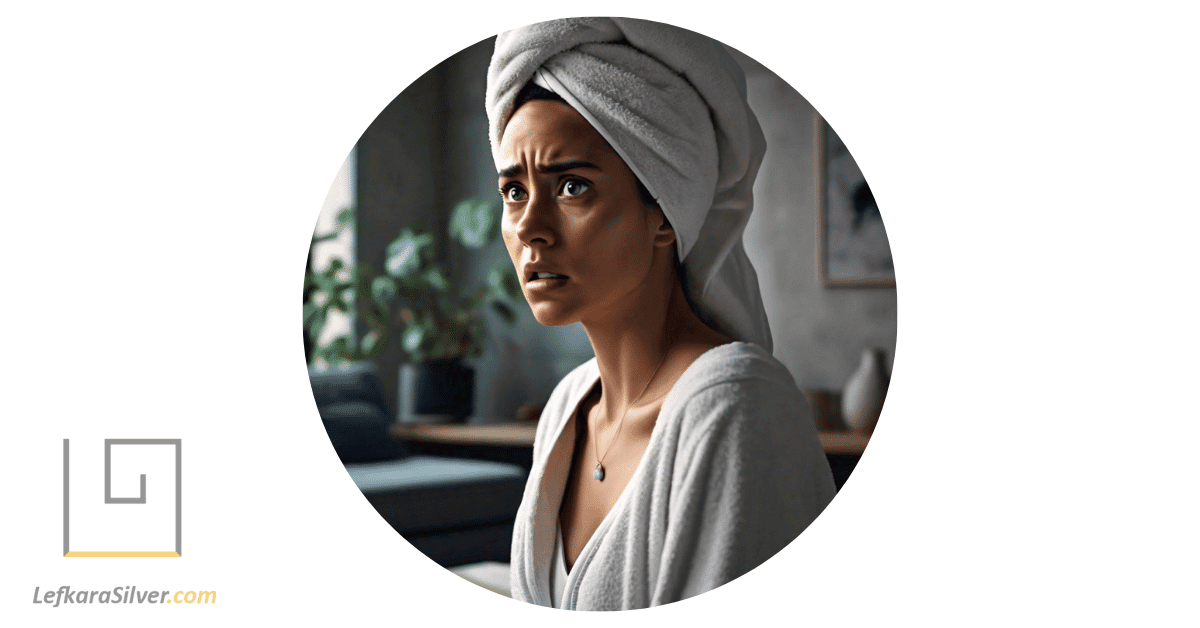
What Happens When You Shower with Opal Necklaces
Showering with opal necklaces can be just as damaging as wearing opal rings. The delicate nature of opals means they are susceptible to various water-related issues, regardless of the type of jewelry they are set in.
One of the most significant risks of showering with an opal necklace is the potential for the stone to absorb water and become discolored or stained. Opals are known to absorb liquids and oils, which can lead to a yellowish or brownish tinge that detracts from their natural beauty. This is particularly true for Ethiopian opals, which are more porous than other varieties.
Another concern with showering while wearing an opal necklace is the impact of heat and steam on the stone. Like with opal rings, exposing an opal necklace to hot water followed by cooler air can cause thermal shock, leading to cracks and crazing. This damage can be difficult or impossible to repair, permanently altering the appearance of your necklace.
| Factor | Ethiopian Opal | Australian Opal |
|---|---|---|
| Porosity | More porous, prone to absorbing liquids and oils | Less porous, more resistant to absorption |
| Durability | Less durable, more prone to scratches and chips | More durable, better resistance to wear and tear |
| Water Resistance | Lower water resistance, more susceptible to damage from moisture | Higher water resistance, better able to withstand exposure to water |
| Color Play | Often more vibrant and colorful | Can be more subdued, with a softer color play |
As the table above illustrates, Ethiopian opals are generally more susceptible to water damage than their Australian counterparts due to their higher porosity and lower durability. If you do decide to shower with an opal necklace, it’s essential to take extra precautions to protect the stone from moisture and temperature changes. One option is to tuck the necklace inside your shirt or blouse to minimize direct exposure to water and steam. You should also avoid using hot water and limit your shower time to reduce the overall impact on the opal.
The Reality of Showering with Opal Bracelets
Regarding showering with opal bracelets, the reality is that it’s best to avoid it altogether. Opals are delicate gemstones that require special care and attention, and exposing them to water and moisture can lead to many problems.
One of the biggest concerns with wearing an opal bracelet in the shower is the risk of damage from soap and other shower products. Shampoos, conditioners, and body washes often contain harsh chemicals that can dull the opal’s shine or cause discoloration. These products can also leave behind a film that can be difficult to remove, further compromising the appearance of your bracelet.
Another issue to consider is the impact of hot water and steam on your opal bracelet. Opals are sensitive to sudden temperature changes, and exposing them to hot water followed by cooler air can cause thermal shock, leading to cracks and crazing. This damage can be irreversible and significantly impact your bracelet’s value and appearance.
If you do decide to shower with your opal bracelet, there are a few precautions you can take to minimize the risk of damage. One option is to remove your bracelet before showering and store it safely, such as a jewelry box or soft pouch. If you forget to remove your bracelet, keep it away from direct contact with water and soap as much as possible. After showering, dry your bracelet thoroughly with a soft cloth to remove any moisture or residue.
Wearing Opal Earrings in the Shower – Yes or No
When it comes to wearing opal earrings in the shower, the answer is a resounding no. While earrings may seem like a safer option than rings or bracelets, the truth is that they are just as susceptible to water damage.
One of the biggest concerns with wearing opal earrings in the shower is the risk of the earrings falling out and going down the drain. The steam and moisture from the shower can cause the earring backs to loosen, increasing the likelihood of loss. This is particularly true for stud earrings, which can easily slip out of your ears without noticing.
Another issue to consider is the impact of water and soap on the opal itself. Like with other types of opal jewelry, exposure to moisture and harsh chemicals can cause the stone to become dull, discolored, or even cracked. This damage can be difficult or impossible to repair, permanently altering the appearance of your earrings.
If you need to clean your opal earrings, the best approach is to use a soft, dry cloth to wipe away any dirt or debris gently. Avoid using water or any cleaning solution, as this can cause damage to the stone. If your earrings are particularly dirty, you can take them to a professional jeweler for a thorough cleaning.
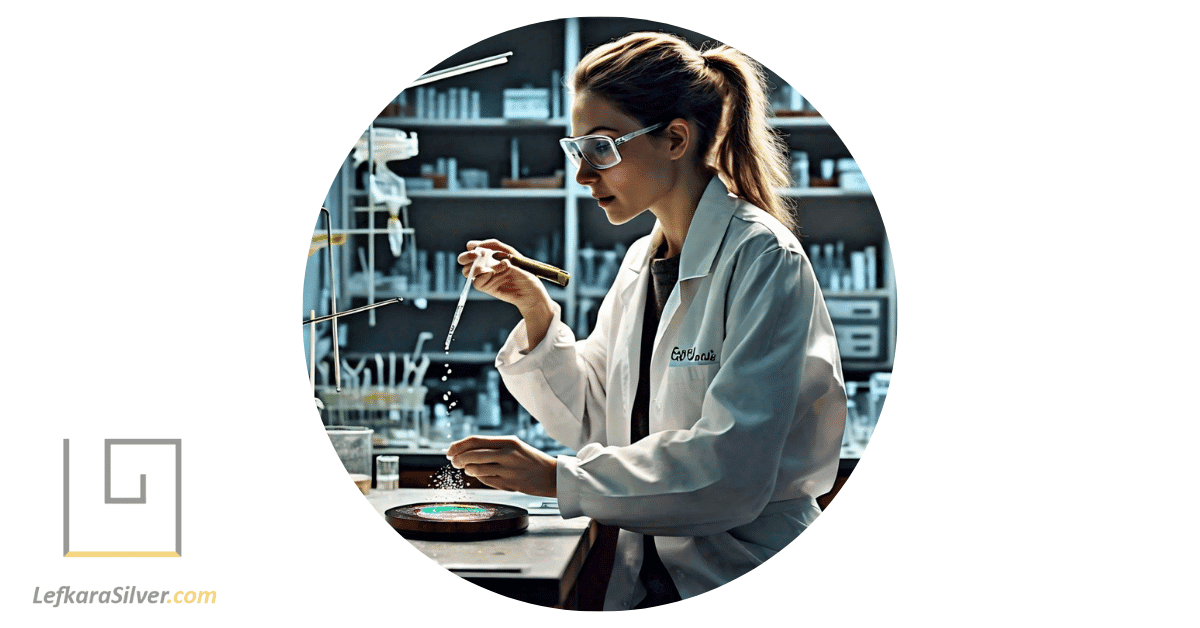
Testing Opal Jewelry’s Water Resistance
While it’s generally best to avoid exposing opal jewelry to water, there may be times when you want to test its water resistance. This can be particularly useful if you’re considering purchasing a piece of opal jewelry and want to know how it will hold up over time.
A straightforward way to test an opal’s water resistance is to place a drop of water on the stone’s surface and observe how it reacts. If the water beads up and rolls off the surface, the opal will likely have a higher level of water resistance. If the water is absorbed into the stone or leaves a visible mark, the opal may be more porous and susceptible to damage.
| Type of Opal | Water Resistance | Porosity | Durability |
|---|---|---|---|
| Australian Opal | High | Low | High |
| Ethiopian Opal | Low to Medium | High | Low to Medium |
| Boulder Opal | High | Low | High |
| Fire Opal | Medium to High | Medium | Medium to High |
| Pink Opal | Low to Medium | High | Low to Medium |
As the table above illustrates, different opals have varying levels of water resistance, porosity, and durability. Australian opals and boulder opals tend to have the highest water resistance and durability, while Ethiopian opals and pink opals are more porous and susceptible to damage.
It’s important to note that even opals with higher water resistance should still be treated with care when it comes to exposure to moisture. While they may be less likely to absorb water or become damaged, it’s still best to remove them before showering, swimming, or engaging in other activities involving prolonged water exposure.
If you’re unsure about the water resistance of your opal jewelry, it’s always best to err on the side of caution and avoid exposing it to moisture altogether.
Soap and Opal Jewelry: A Closer Look
When showering with opal jewelry, one of the biggest concerns is the potential impact of soap on these delicate gemstones. While it may seem harmless to wear your opal pieces in the shower, soap can be incredibly damaging to opals over time.
One of the main reasons soap harms opals is that it can leave behind a filmy residue on the stone’s surface. This residue can build up over time, dulling the opal’s natural shine and making it appear cloudy or murky. In some cases, the residue may even cause the opal to become discolored, taking on a yellowish or brownish tinge.
Another issue with soap and opal jewelry is that certain types of soap can be abrasive and cause physical damage to the stone. Soaps containing exfoliating beads or other rough particles can scratch the opal’s surface, leaving behind visible marks and reducing its overall beauty.
It’s also worth noting that some soaps contain harsh chemicals that can react negatively with opals. Sulfates, for example, are a common ingredient in many soaps and can cause opals to become dry and brittle over time. This can lead to cracking, chipping, or even breaking the stone.
Precautions to Take when Showering with Opal Jewelry
If you do decide to shower with your opal jewelry, there are a few precautions you can take to minimize the risk of damage. The first and most crucial step is to remove your opal pieces before getting in the shower. This will help prevent exposure to water, soap, and other potentially harmful substances.
If you forget to remove your opal jewelry before showering, you can still do a few things to protect it. One option is to keep your jewelry away from direct contact with water and soap as much as possible. This may mean keeping your hands away from your face and neck or even wearing gloves to protect your rings and bracelets.
Another precaution when showering with opal jewelry is using mild, non-abrasive soap. Look for soaps that are specifically designed for sensitive skin, as these are less likely to contain harsh chemicals or exfoliating particles that can damage your opals.
After showering, dry your opal jewelry thoroughly with a soft, lint-free cloth. Avoid using paper towels or tissues, as these can scratch the stone’s surface. If possible, let your jewelry air dry completely before storing it away.
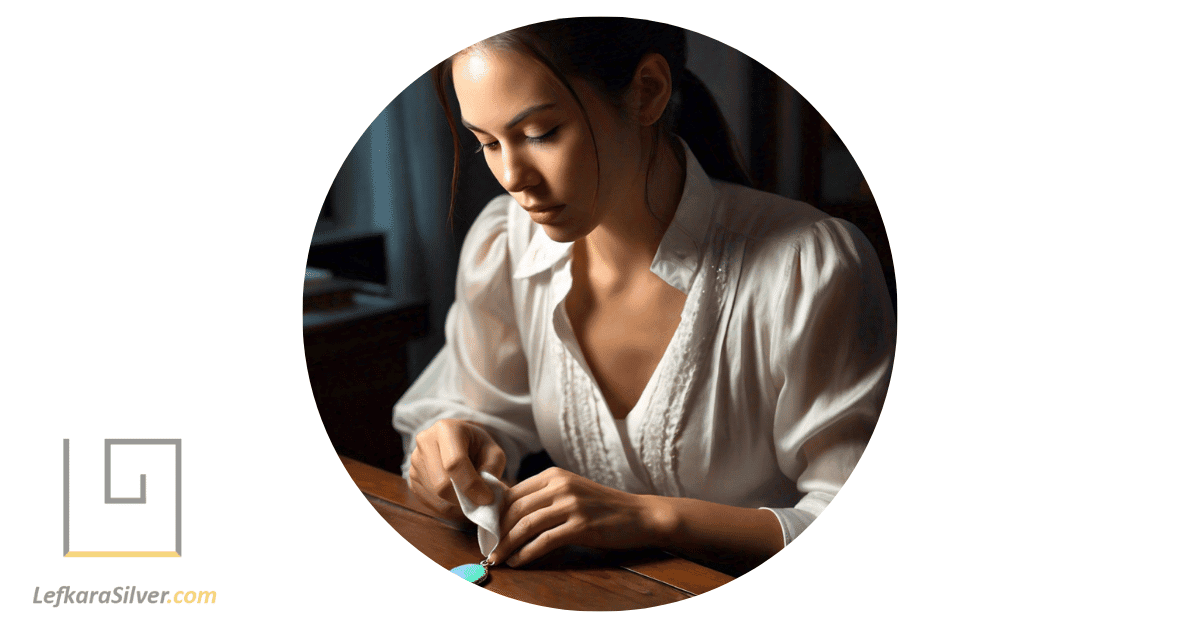
Cleaning Your Opal Jewelry Post Shower
Even if you take precautions when showering with your opal jewelry, it’s still important to clean it thoroughly afterward to remove any soap residue or other buildup. The best way to clean opal jewelry depends on the type of setting and the overall condition of the stone.
| Cleaning Method | Type of Opal Jewelry | Pros | Cons |
|---|---|---|---|
| Soft Brush | Rings, Pendants | Gentle, Effective | Time-consuming |
| Damp Cloth | All Types | Quick, Easy | May not remove all residue |
| Ultrasonic Cleaner | Solid Opals Only | Thorough Cleaning | Can damage doublets/triplets |
| Professional Cleaning | All Types | Expert Care | Costly |
For most types of opal jewelry, the safest and most effective cleaning method is to use a soft-bristled brush and warm, soapy water. Gently scrub the opal’s surface with the brush, paying particular attention to any crevices or hard-to-reach areas. Rinse the jewelry thoroughly with clean water and dry it with a soft cloth.
If your opal jewelry is particularly dirty or has a lot of built-up residue, you may need to soak it in warm water for a few minutes before brushing. Avoid using hot water, which can cause thermal shock and damage the stone.
For more delicate opal pieces, such as doublets or triplets, it’s best to avoid ultrasonic cleaners, which can cause the layers to separate. Instead, opt for a damp cloth and gentle wiping motions.
If you’re unsure how to clean your opal jewelry properly, it’s always best to avoid caution and take it to a professional jeweler. They will have the knowledge and tools to clean your pieces safely and effectively.
The A to Z of Opal Jewelry Care and Maintenance
Caring for your opal jewelry is essential to maintaining its beauty and longevity. Here’s a comprehensive guide to help you keep your opal pieces looking their best:
Avoid exposing your opals to extreme temperatures, both hot and cold. Sudden temperature changes can cause thermal shock, leading to cracks or fractures in the stone. This means removing your opal jewelry before entering saunas, hot tubs, or steam rooms.
Be mindful of the chemicals your opal jewelry comes in contact with. Substances like perfume, hairspray, and household cleaners can damage the opal’s surface, causing it to become dull or discolored. Always apply these products before putting on your opal jewelry, and remove your pieces before cleaning or doing household chores.
Clean your opal jewelry regularly to remove dirt, oil, and other debris. The safest way to clean most opal pieces is with warm, soapy water and a soft-bristled brush. Gently scrub the stone’s surface, rinse thoroughly, and dry with a soft, lint-free cloth. Avoid using ultrasonic cleaners or harsh chemicals, as these can damage the opal.
Store your opal jewelry properly to prevent scratches and other damage. Keep each piece in a soft pouch or compartment in your jewelry box. Avoid storing opal jewelry in direct sunlight or areas with high humidity, as this can cause the stone to fade or become brittle over time.
Have your opal jewelry professionally checked and serviced every 12-18 months. A qualified jeweler can inspect your pieces for any signs of damage, clean them thoroughly, and make any necessary repairs. This will help ensure that your opal jewelry remains in top condition for years.
The Final Word on Showering with Opal Jewelry
Throughout this article, we’ve explored the various aspects of wearing opal jewelry in the shower, including the seven effects of water on opals and the precautions to protect your precious pieces.
While it may be tempting to keep your opal jewelry on in the shower, the reality is that it’s best to remove it beforehand. The combination of water, soap, and heat can lead to various issues, from dulling the stone’s surface to causing cracks and fractures.
If you accidentally wear your opal jewelry in the shower, follow the cleaning and care tips outlined in the previous section to minimize potential damage. This includes gently cleaning the piece with warm, soapy water and drying it thoroughly with a soft cloth.
As a final note, it’s worth mentioning that the information presented in this article is up-to-date as of September 2025. However, as with any jewelry care, staying informed about the latest best practices and guidelines is always a good idea.
For more expert advice on caring for your opal jewelry and the latest news on jewelry trends and buying guides, follow our website, LefkaraSilver.com. Our team of experienced jewelers and writers is dedicated to helping you make informed decisions about your jewelry purchases and keeping your pieces looking their best for years. Don’t miss out – follow us today!
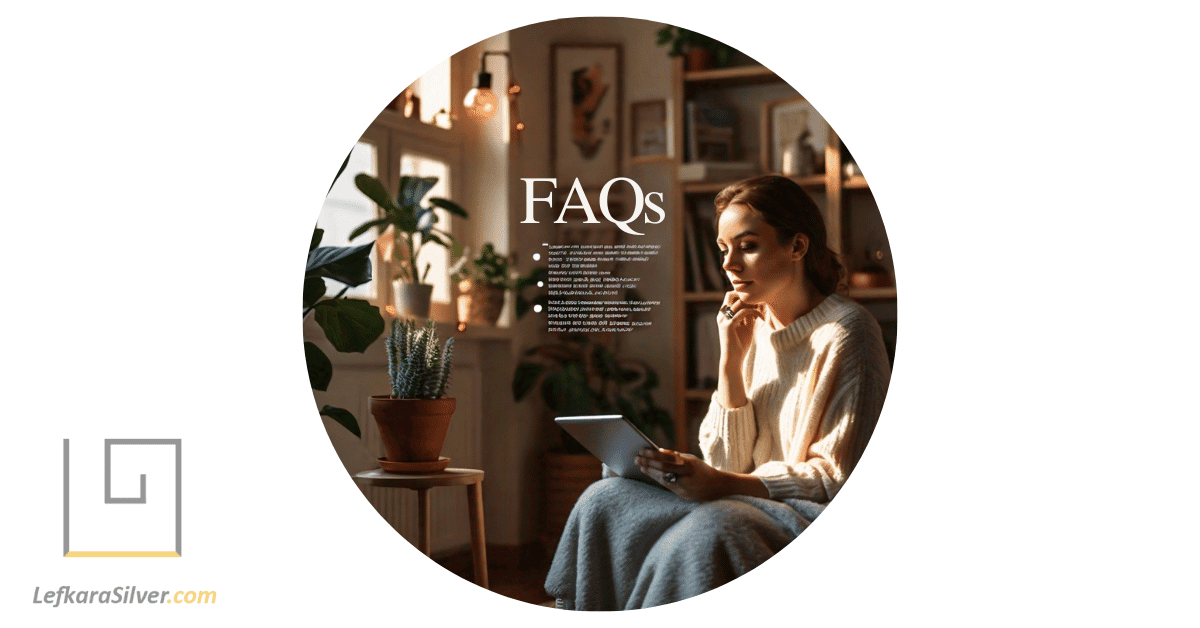
Can You Shower With Opal Jewelry FAQs
Is it safe to shower with opal jewelry on?
No, it is not safe to shower with opal jewelry on. Opals are delicate gemstones sensitive to water, heat, and chemicals. Exposure to water can cause the opal to absorb moisture, leading to a change in color or opacity. Additionally, the heat and humidity from a shower can cause the opal to crack or become brittle over time. Removing opal jewelry before showering is best to prevent any potential damage.
What Happens If You Shower With Opal Jewelry?
Showering with opal jewelry can have several negative effects on the gemstone. The water can cause the opal to absorb moisture, leading to a change in appearance. The heat and humidity from the shower can also cause the opal to crack or become brittle, permanently damaging the stone. Furthermore, the chemicals in soap and shampoo can react with the opal, causing discoloration or even surface erosion. Over time, repeated exposure to water and chemicals can significantly degrade the quality and value of the opal.
Does Water Damage Opal Jewelry?
Yes, water can damage opal jewelry. Opals are hydrophilic, meaning they attract and absorb water. When an opal absorbs too much water, it can cause the stone to become cloudy or change color. In some cases, the absorbed water can cause the opal to crack or break due to the stress on the stone’s structure. Even exposure to high humidity can cause damage over time, as the opal slowly absorbs moisture from the air. To protect opal jewelry, it is best to keep it away from water and store it in a dry place when not being worn.
How Does Showering Affect Opal Jewelry?
Showering can have several negative effects on opal jewelry. The combination of water, heat, and humidity can cause the opal to absorb moisture, leading to changes in appearance and structure. The high temperature of the shower can cause the opal to crack or become brittle, while the steam can lead to a cloudy or milky appearance. The chemicals in soap and shampoo can also react with the opal, causing discoloration or surface damage. Over time, repeated exposure to these conditions can significantly degrade the quality and value of the opal jewelry.
What Precautions Should Be Taken While Showering With Opal Jewelry?
To minimize the risk of damage to opal jewelry while showering, it is best to remove the jewelry before getting in the shower. If you must wear opal jewelry in the shower, try to limit its exposure to water and chemicals as much as possible. Avoid submerging the jewelry in water, and try to keep it away from direct streams of water. After showering, gently pat the opal dry with a soft cloth and allow it to air dry completely before storing it. It is also a good idea to have opal jewelry periodically checked and cleaned by a professional jeweler to ensure its longevity.
Can Opal Jewelry Withstand The Humidity And Heat From A Shower?
No, opal jewelry cannot withstand the humidity and heat from a shower without risk of damage. Opals are sensitive to changes in temperature and moisture, and the high humidity and heat of a shower can cause the stone to crack, become brittle, or change appearance. The steam from the shower can also cause the opal to absorb moisture, leading to a cloudy or milky appearance. Over time, repeated exposure to these conditions can significantly degrade the quality and value of the opal jewelry. To protect opal jewelry, it is best to remove it before showering and store it in a dry, cool place when not being worn.
Does Soap Or Shampoo Affect Opal Jewelry If You Shower With It?
Yes, soap and shampoo can affect opal jewelry if you shower with it. These products often contain harsh chemicals that can react with the delicate structure of the opal, causing damage or discoloration. Some common ingredients in soap and shampoo, such as sulfates and alcohol, can dry out the opal and lead to cracking or crazing. Additionally, the oils and residue from these products can build up on the opal’s surface, dulling its shine and making it appear cloudy. To protect your opal jewelry, it’s best to remove it before showering and avoid exposing it to soap and shampoo.
Can You Swim With Opal Jewelry?
It is not recommended to swim with opal jewelry. The chlorine and other chemicals in swimming pools can particularly damage opals. Prolonged exposure to chlorinated water can cause the opal to dry out, leading to cracks and fractures in the stone.
Saltwater from the ocean can also have a negative impact on opal jewelry, as the salt can deposit on the surface of the stone and cause erosion over time. Furthermore, the water’s cold temperature can cause the opal to contract, stressing the stone’s structure. To maintain the beauty and integrity of your opal jewelry, it’s best to remove it before swimming.
How Does Water Exposure Impact The Longevity Of Opal Jewelry?
Water exposure can significantly impact the longevity of opal jewelry. Opals are hydrophilic, meaning they attract and absorb water easily. When an opal is exposed to water for extended periods, it can absorb too much moisture, causing the stone to swell and become stressed. Over time, this can lead to cracks, crazing, and breakage.
Additionally, water exposure can cause the opal to become cloudy or change color, permanently altering its appearance. To ensure the longevity of your opal jewelry, it’s crucial to minimize its exposure to water and store it properly in a dry place when not worn.
How To Care For Opal Jewelry If You Accidentally Shower With It?
If you accidentally shower with your opal jewelry, immediately minimizing potential damage is essential. First, gently pat the opal dry with a soft, lint-free cloth. Avoid rubbing the stone, as this can cause abrasion and scratches. Allow the opal to air dry completely before storing it, as trapped moisture can lead to further damage.
If you notice any changes in the appearance of the opal, such as cloudiness or discoloration, consult a professional jeweler for advice on restoration or repair. To prevent future accidents, habitually remove your opal jewelry before showering or engaging in any water-related activities.
What Are The Expert Opinions On Showering With Opal Jewelry?
Expert opinions are unanimous in advising against showering with opal jewelry. Jewelers and gemologists agree that the combination of water, heat, and chemicals present in a shower can harm the delicate structure of opals.
They recommend removing opal jewelry before showering to prevent damage, discoloration, and changes in appearance. Experts also suggest storing opal jewelry in a dry place, separate from other stones, to avoid any potential scratches or impacts. Regular maintenance, such as professional cleaning and check-ups, can help extend the life of your opal jewelry and ensure its lasting beauty.
How To Restore Opal Jewelry If It Gets Damaged In The Shower?
If your opal jewelry gets damaged in the shower, it’s essential to seek professional help for restoration. Do not attempt to clean or repair the damaged opal, as this can lead to further harm. A qualified jeweler or gemologist can assess the extent of the damage and recommend the best course of action.
Sometimes, the opal may need to be repolished to remove surface scratches or cloudiness. If the damage is more severe, such as cracks or breaks, the stone may need to be replaced entirely. Prevention is key in opal jewelry care, so always remove your pieces before showering to minimize the risk of damage.
